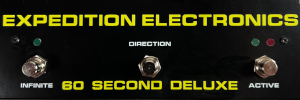Showing posts sorted by relevance for query boxoftextures. Sort by date Show all posts
Showing posts sorted by relevance for query boxoftextures. Sort by date Show all posts
Saturday, January 14, 2023
Wires Walkthrough
video upload by boxoftextures
"Just got Wires, a new effect plug-in from AudioThing/Hainbach. Don't think I've done an entire video about an effect before, although now that I think of it I might have made some looper and shimmer videos. But regardless, this was great fun, instantly felt I was in some '70s Le Carre spy movie! Did this on an iPad but there's also a computer version as well (Mac/Windows/Linux) which I also have.
Basically you're running your sound through a Soviet wire recorder, and there's lots of controls to mangle things in subtle or not-so-subtle ways. Tons of fun! I used a sequencer in this demo as that was my immediately imagined use case but now I'm thinking about how it could be useful for vocals, say.
I called this video a walkthrough, which I haven't really done before. It's not exactly a demo, but it's also not a complete user guide or review either. I do demonstrate most of the controls though so you should be able to get a good idea of what's possible.
Recommended.
https://www.audiothing.net/effects/wi...
Mastodon: https://vmst.io/@selgart
Twitter: https://twitter.com/selgart
Twitter: @selgart
Patreon: https://www.patreon.com/boxoftextures"
Saturday, October 16, 2021
Voltage Modular VM900 Ratcheting
video upload by boxoftextures
"Well, been playing almost nonstop in Voltage Modular with the VM900 module collection, basically a pile of Moog-style modules from Cherry Audio. So what does one do with a Moog modular? For my part I'd head straight for the 960 sequencer. And what does one do once you've gotten that working? Well, ratcheting is the next step, of course. Voltage Modular does have a number of ratcheting modules, and the clocks to drive them, but I wanted to do it analog-style, not any of this new-fangled modern digital stuff (ignoring for the moment that this is all in computer software, of course). Was pretty satisfying to get it working. To be totally transparent the ratcheting aspect of the patch was not my original design. Many years ago Roger Arrick of synthesizers.com did a demo video of his Q960 sequencer module and how to use the 962 switch and an oscillator to make the ratcheting pulses. That video has been in the back of my mind for years, and in my bookmarks, but I don't quite have the Euro hardware for it and there hasn't really been a 960-style sequencer in Voltage Modular. Until now, that is.
So I took Arrick's basic concept, which is pretty ingenious, and adapted it to the slightly different modules in Voltage Modular. Turns out doing ratcheting in the analog realm is a lot more work than using a digital ratcheting module. Surprise! Was incredibly happy to get it working.
In this setup I'm using Row A of the sequencer for the notes and Row B for voltages used to generate the extra triggers. And it's great fun to play with the knobs and change the number of ratchets and which notes in the sequence get them. However, that's a lot of manual labor, and I wanted to take it a step further and make the ratchets happen on their own at random steps. That is not in this video, alas, but fear not, I've been able to patch it up and that's what the next, more in-depth video will be about. Still done entirely in the analog module realm though, for authenticity's sake."
Twitter: https://twitter.com/selgart
Patreon: https://www.patreon.com/boxoftextures
Monday, October 21, 2024
Generative Sequencing with 4Pockets MidiStep
video upload by boxoftextures
"Another excellent app from 4Pockets. Although I do wish they capitalized MIDI properly LOL. MidiStep is a very flexible sequencer app with a lot of available options, almost all of which also happen to be exposed in AUM for some automation fun. It's basically a 16-step sequencer, but you can have multiple patterns chained together in various ways for longer sequences if needed. In addition, there are three lanes: Notes, Octave, and uh, Other LOL. That last one has a Sequencer section with velocity, gate, divider (i.e., ratcheting) and other lanes, as well as a Modulation section. It's really flexible and powerful.
What I've done for this video is have two instances of MidiStep, one for a sequence and one for chords. I also use Euclidean, also from 4Pockets, to trigger a new set of random notes on occasion. With these three sequencers I have a controlled-but-random generative sequence, all done without human intervention once the Play button is tapped.
You can do lots of 'normal' things with MidiStep as well, of course, but I just love to build things that make 'automatic' music every now and then.
Featuring
4Pockets MidiStep
with
4Pockets Euclidean
Arturia iSEM
Klevgrand Pipa
DiscoDSP Discovery
and
AUM
Recorded and edited in ScreenFlow
All patches, as always, my own
Mastodon: https://vmst.io/@selgart
Twitter: / selgart
Patreon: / boxoftextures
4Pockets MidiStep https://apps.apple.com/us/app/midiste..."
Sunday, July 28, 2024
Ambient with Harmony Bloom
video upload by boxoftextures
"Well, in my head this was going be five minutes long and be kind of a quick demo of an ambient technique I figured out for making a Bloom-ish generative ambient setup but with "modern" apps in AUM. Bloom is an app by Brian Eno—well, two apps, really—that has various generative modes that you can interact with or just have them play on their own. And in an online discussion group I'm in someone was bummed that Bloom is "just" a standalone app and not AUv3 or Interapp Audio. So I thought about it for a bit and came up with a way to make something Bloom-ish.
So the original thought was five minutes or so of generative music that I could talk over and explain my methods. But I just couldn't "ruin" it by talking over the music, it was too jarring. So right off the bat it was twice as long as I'd originally intended. And then I set it going again, this time with a tiny bit of shimmered piano, and didn't talk over it again, so it kind of ended up four times as long as I'd wanted LOL. So please accept my apologies, and I'll see if I can organize it into chapters to make it easy to navigate.
Basically I'm using iSEM as my synth, driven by Harmony Bloom, and then going into Weeping Wall for a cascade of echoes and then into Eos 2 for some (as usual) incredibly lush reverb. And a Pianoteq Steinway going into BLEASS Shimmer in the second piece. Many more details in the video.
Featuring
Harmony Bloom
with
Arturia iSEM
Aqeela Adam Music Weeping Wall
Eos 2
Modartt Pianoteq
BLEASS Shimmer
and
AUM
and honorable mention to Audio Symmetric Zoa
Recorded and edited in ScreenFlow
Mastodon: https://vmst.io/@selgart
Twitter: / selgart
Patreon: / boxoftextures"
00:00 Intro
00:31 Eno's Bloom
02:23 iPad App Setup
06:50 Harmony Bloom Details
09:20 Ambient Bloom 1
13:48 Thoughts on this Setup
17:55 Ambient Bloom 2
Wednesday, November 24, 2021
VM900 Pseudo Clocks
video upload by boxoftextures
Twitter: https://twitter.com/selgart
Patreon: https://www.patreon.com/boxoftextures
"In one of my previous videos I was bemoaning the fact that the 960 Sequential Controller modules—henceforth to be called sequencers, as is right and proper—did not have clock inputs. And while technically true, at some point in a week or so of having given up on the idea and not thinking about it, it somewhat randomly occurred to me that you could make use of the Shift input to essentially clock the sequencer. The "proper use" of the Shift input is to force the sequencer to advance to the next stage when it sees an input voltage. It's not exactly a true clock because technically the sequencer clock would not actually be running but the effect is more or less the same; when the Shift input sees a pulse, it advances the sequencer to the next step. Sort of like a clock.
So normally what one does with a running sequencer is have it send out voltages on each step that get converted into notes by an oscillator. However, while that's the usual there's no reason you have to actually use it that way. In this instance, we're using the second row of voltage knobs to send out 2 volts on the first step and 0 volts on the others. Essentially this means that if the sequencer is set to 4 steps we've now divided that by four if we only send out a voltage on that first step. Voilà, we just made a 4-to-1 clock divider using only analog circuitry.
But that's just the beginning. Let's say Sequencer 1 is set to three steps and Sequencer 2 is set to five steps. If they're both being clocked by the same external oscillator, you now have a 5 against 3 rhythm going on. But what if you turn up knob 4 on that second sequencer? Now you have 1 and 4 out of 5 playing against the 1 out of 3 of the first sequencer. And now we're headed for polyrhythms. But why stop there? You can add in a third sequencer, for example. Or you can start ratcheting some of the steps to make even more complex rhythms. Or what would happen if you used the voltage of one of the sequencer steps to change the frequency of the clocking oscillator? Or how about doing all of these sorts of things and also have the sequencer's internal clock running as well? That's the beauty of modular; you can do all sorts of things.
I haven't explored all of those options in this particular video because if I did it would've been three hours long. Perhaps next time. What I've done this time though is go through all of the steps to get something like this working, more than enough to get you started if you're so inclined.
Featuring
Cherry Audio Voltage Modular VM900 Collection: https://store.cherryaudio.com/bundles..."
Friday, April 08, 2022
Random Sequence Lengths
video upload by boxoftextures
Follow-up to this post.
"So I was minding my business the other day and checking out Matrixsynth.com, as one does, and came across a post about a video from OZ Hall. He had patched up a Eurorack version of a 960 sequencer so it would vary the sequence lengths. I hadn't even watched the video yet but just from what was in the description I was able to see the whole setup laid out before my eyes. I could make this work in Voltage Modular with randomized sequence lengths picked automatically each time through the sequence. So I set to work and an hour late I had this patch, and in this video I go through it step by step to show how it all works.
The major difference between my version and what OZ Hall did is that I added a Random Task module and a couple of switcher modules so it could switch sequence length on its own without me having to manually do it. Could totally be done in hardware given the proper modules, of course.
To make this work what I've done is to connect each sequencer step's trigger output jack to an input on a switching module. Then, every time the sequencer hits step 1 it sends a clock to the Random Task module, which makes it pick a random voltage. That gets sent to the 1x8 Switch module which picks the output based on the voltage level. That voltage gets sent to the switching module which sends a voltage for the chosen step into the buss module and then on to the trigger input of the sequencer, forcing it to start over from step 1.
So every time the sequencer hits step 1 it essentially picks the step which triggers the reset to step 1 and you get random sequence lengths, picked by the Random Task.
So I'd like to thank both Matrix and OZ Hall, and there are links below to both the post on Matrixsynth.com and to the YouTube video that set all the bells off in my head.
Matrixsynth post: https://www.matrixsynth.com/2022/04/b...
OZ Hall video: https://youtu.be/1RBgkFnQRe0https://youtu.be/1RBgkFnQRe0
Modules used:
From Cherry Audio
960 Sequential Controller
962 Sequential Switch
Random Task
1x8 Switch
SynthVoice
Mini LFO
Stereo Delay
From Andrew Macaulay
Micro MixBus
Fixed DC
From Playertron
Switchboard
From haslo
HÄÄSchen
Lastly, just to make this super clear as I don't explicitly bring it up in the video, say you want to have a four step sequence. In that case, you'd want to patch the output jack of step 5 to the input jack of step one, What we're doing with the switching mechanism is having *all* the output jacks connected at once through the buss but we're letting the Random Task module choose which switch it closes on the switching module to let one of those signals through. So in a sense we're using a module to repatch the bottom row of jacks on the sequencer on the fly.
Featuring
Cherry Audio Voltage Modular https://cherryaudio.com/products/volt...
Recorded and edited in ScreenFlow https://www.telestream.net/screenflow/
Audio routing done in Rogue Amoeba Loopback https://rogueamoeba.com/loopback/
Sennheiser XS Lav USB-C microphone https://en-us.sennheiser.com/xs-lav-u...
Twitter: https://twitter.com/selgart
Patreon: https://www.patreon.com/boxoftextures"
Tuesday, October 26, 2021
Voltage Modular VM900 Tangram
video upload by boxoftextures
"Well I've always loved the Tangram sequence. It's iconic, what I think of when think of sequencers. From the Tangerine Dream album in 1980 of the same name. It's four patterns of 7 notes, each played twice. I even already did a video about it several weeks ago, except I used "standard" digital modules to do it. Three sequencers, the kind where you put in note names (such as A3, B5, etc.), and were you have digital clock modules controlling everything. Makes things easier! Except now that Cherry Audio's come out with the VM900 Collection of Moog-style modules, I now have a real (LOL) sequencer to work with. Totally analog, nothing digital. Which means you can't say something like, "give me 96bpm," you have to figure out the precise voltages you'll need to get the results you want. And you have to use analog logic and programming to get all your events happening when you want them and all in the proper order. Endless fun! (No, I mean it!) It's not that it's harder to do, it's that it makes you think differently to get things working. Wouldn't have it any other way.
Twitter: https://twitter.com/selgart
Patreon: https://www.patreon.com/boxoftextures"
Thursday, October 21, 2021
Voltage Modular VM900 Random Ratcheting Deep Dive
video upload by boxoftextures
"I suppose I should've started giving these VM900 videos chapter numbers. This one's Chapter Three. The first two were a basic sound demo and the second was a brief ratcheting demo. This one is definitely not brief. It's a deep dive into the 960 Sequencer module, how to patch it to get controllable ratcheting, and then how to patch together a set of modules essentially doing analog programming in order to generate random ratcheting entirely in the analog domain.
00:00 intro
01:30 patch basics - module tour
04:00 sequencer intro
10:40 ratcheting explanation
21:05 ratchet randomization concepts
22:45 randomization patching explanation
26:30 analog domain vs. digital domain ratcheting
29:10 outro"
Twitter: https://twitter.com/selgart
Patreon: https://www.patreon.com/boxoftextures
Saturday, January 22, 2022
Loopy Pro AUv3 Effects
video upload by boxoftextures
"Loopy Pro is great fun on its own but you can add AUv3 effects in several different ways. First is when you're recording (not shown in this video), second is adding an effect to an already existing loop, and third is by adding an effects bus and then sending other channels through it. Just a quick how-to to show how it's done."
Twitter: https://twitter.com/selgart
Patreon: https://www.patreon.com/boxoftextures
Thursday, March 17, 2022
Dreamsynth Quick Minute
video upload by boxoftextures
"New from Cherry Audio.
Only had this a few minutes and already feel totally at home in it. Just made these three patches and wanted to get this out there so folks could get an idea of what it's about. This is the short version just to hear the patches though, the longer version will show how I built them. Might take me a day or three to get that edited though.
This thing's a winner. Three oscillators, each with dual waves with hundreds of choices, three LFOs, easy and flexible modulation and routing, sounds great. It's deep yet at the same time simple to operate. Recommended.
Featuring
Dreamsynth, from Cherry Audio https://cherryaudio.com/products/drea...
Edited in ScreenFlow https://www.telestream.net/screenflow/
Audio routing done in Rogue Amoeba Loopback https://rogueamoeba.com/loopback/
Twitter: https://twitter.com/selgart
Patreon: https://www.patreon.com/boxoftextures"
Monday, February 08, 2021
Minky Starshine quick demo—Glass Pad
video by boxoftextures
"Quick demo of the Minky Starshine additive synth. Not even a demo, really, just a chord progression I came up with while making the patch. I got this originally in 2004 according to my records, so I've had it now for 17 years LOL. Got this because there was no way was ever going to be able to get an Alpha Syntauri even though that was almost 20 years earlier. Made by Expert Sleepers, the same folks now make make the Disting and other Eurorack modules. Super happy they're still keeping it modern OS compatible. Like many older soft synths the interface is now super tiny, mostly because at the time nobody could have possibly imagined today's high-res monitors. Everything still works though so I'm not complaining. I suppose if this were a modern app everything would be scalable live animation in 3D but none of that's really necessary to be honest.
Minky Starshine is basically an additive synthesizer with a subtractive filter, with three LFOs and some envelope generators, and you can use all those to modulate the harmonics. Makes the sound shift and shimmer in interesting ways, or you can "just" make your regular old synth patches too. Surprisingly flexible despite at first glance having not all that many controls. And as a bonus it's delightfully psychedelic too. You can still buy it for remarkably little money (iLok account required) and it still sounds great even after several decades.
You can find Minky Starshine at https://www.expert-sleepers.co.uk/min...
Twitter: @selgart
Patreon: https://www.patreon.com/boxoftextures"
Minky Starshine was first featured on the site back in 2008 here.
Saturday, July 03, 2021
Voltage Modular Sequencer Chaining
video upload by boxoftextures
"Cherry Audio sent out a tweet the other day about how you could take two 8-step sequencers and wire them together to make a 16-step sequencer using a clock divider and an 8 x 1 switch module. Unfortunately they left out all the juicy bits on how to actually make it work. An exercise for the reader, as one might say. I've taken the liberty of stepping in and filling in all the missing details to actually make this thing work, and then thinking of a few ways one might take it further. Not a difficult patch but a bit of a dastardly yet ingenious hack, LOL, which I had a lot of fun figuring out. So I made an in-depth 20 minute video going through all the modules, connections, steps, and the reason why it all works."
Twitter: @selgart
Patreon: https://www.patreon.com/boxoftextures
Tuesday, November 22, 2022
The iPad Composite DAW, or, How To Easily Create An Entire Recording Studio On Your iPad
video upload by boxoftextures
"'The iPad Composite DAW'
Built with AUM, Audiobus, and Audio Evolution
This one's a bit of a long one, and I've been meaning to do it for a while. Basically this is a how-to on how I'm using AUM to host my plug-ins, then using Audiobus to route the audio out of AUM into my DAW of choice, which in my case is Audio Evolution Mobile Studio. This essentially lets me turn my iPad into a completely self-contained studio environment. There's a number of steps to get it going, but nothing too difficult, and it all makes sense once you get used to the idea. And it just works! Using these three apps together takes care of sending the audio where it needs to go and configuring almost everything pretty much on its own. It's almost hard to believe how well it works.
Featuring
AUM
Audiobus
Audio Evolution Mobile Studio
With Special Guests
Atom Piano Roll 2
ButterSynth
Pipa
Voiceover recorded using a
Sennheiser XS Lav USB-C microphone
Edited in ScreenFlow
Twitter: https://twitter.com/selgart
Mastodon: https://mastodon.social/@selgart (although I may change to a different instance)
Patreon: https://www.patreon.com/boxoftextures"
Tuesday, March 22, 2022
Patching in Dreamsynth
video upload by boxoftextures
"I love this thing. I live for making textures, and Dreamsynth truly brings it. It's not your mega-giant synth which some software tends to head towards—and which I indeed enjoy—but it has a good helping of what you need and lots of ways to modify things. Almost everything can be modulated, and there's loads of mod sources available. Same with the oscillators. There's three oscillators, two waves each, and hundreds of waves to choose from. In addition, each oscillator has its own independent pitch LFO, completely separate from the three regular LFOs. Throw in a complex multi-mode filter, five effects, arpeggiator, and I haven't even gotten around to the string section yet.
This video shows me making two patches from scratch. I did another patch before those two but I didn't "film" it, alas, although I did include the patch so you could see what it sounds like. There's pretty much no editing out of any long boring knob twiddling. What you see is what I did. Working with the synth is easy and fun; nothing hidden, everything on the panel. These are my first three patching attempts, too. Saw the intro video, immediately downloaded it, and then made these three patches. Very satisfying.
Featuring
Dreamsynth, from Cherry Audio https://cherryaudio.com/products/drea...
Edited in ScreenFlow https://www.telestream.net/screenflow/
Audio routing done in Rogue Amoeba Loopback https://rogueamoeba.com/loopback/
Twitter: https://twitter.com/selgart
Patreon: https://www.patreon.com/boxoftextures"
Wednesday, March 18, 2020
SunVox Tracker Basics
Published on Mar 18, 2020 boxoftextures
"SunVox has been around for a long time on practically every platform. Heck, they even have a Palm Pilot version if that's what you need. I did this video on my iPad Pro but I could have just as easily done it with the Mac version, say, as they're basically identical.
This is a First Contact™ video. The app's not at all new but this is the first time I've really delved into it. In other words, please forgive me if I missed something truly obvious. Definitely looking forward to digging in deeper.
I really only touched the tracker parts of the app, and only one pattern, but there's a lot more to it than that. There are several synthesizer modules, and you can also make complex arrangements on the fly by making multiple patterns. You can add bits of randomness and uncertainty as well in order to make things perhaps more organic or maybe even self-playing possibly, although to be honest I've only barely scratched the surface and not gotten anywhere near those things yet.
I made this video mostly as a very basic demo for folks who've never seen a tracker before, or were wondering how one might be different from a sequencer. The simple answer is that a tracker is perhaps "lighter" than a sequencer in that you can do everything in it just by typing things in on your keyboard. You could just as easily do what I did on an iPhone while waiting for a bus rather than at home on an iPad or a computer, and that's kind of the point. Heck, you could probably do it just as easily on a Game Boy maybe. Not going to give up my laptop or my regular software, but I can actually do music on the fly on my phone at a moment's notice, and that definitely has value.
You can find me on Twitter at https://twitter.com/selgart
I also have a Patreon at https://www.patreon.com/boxoftextures
SunVox is at https://www.warmplace.ru/soft/sunvox/
The SunVox iPad/iPhone app is at https://apps.apple.com/app/sunvox/id3..."
Friday, July 05, 2024
Roland S-1 and CME WIDI Jack Proof of Concept Quick Minute
video upload by boxoftextures
"Just got a Roland S-1 synthesizer (tiny!), and then maybe a week later got a CME WIDI Jack to go with it. This was the first time hooking them together, along with an Xkey Air. Worked really well, and is a super portable setup. This is just a quick minute video just to show it all working, so not an in-depth exploration.
I already have several Xkey Airs, and have used them with my several CME WIDI Masters. I could definitely see getting two or three more S-1s, WIDI Jacks, and Xkeys. Could fit an entire live setup in a backpack that way.
This is 100% S-1, no external effects where used."
Mastodon: @selgart@vmst.io
Twitter: https://twitter.com/selgart
Patreon: https://www.patreon.com/boxoftextures
Tuesday, January 05, 2021
Boxing Day
boxoftextures
"Recorded live in Logic Pro X
Played on a LinnStrument
Featuring:
Synplant, from Sonic Charge
Phase Plant, from Kilohearts
SynthMaster, from KV331 Audio
LuSH-101, from D16 Group
MAnalyzer and MStereoScope, from MeldaProduction"
Twitter: @selgart
Patreon: https://www.patreon.com/boxoftextures
Sunday, June 25, 2023
Patching in TB Lowtone
video upload by boxoftextures
"New synth from Toneboosters, makers of Flowtones. But this is Lowtone, which they're calling an innovative bass synthesizer plug-in. TB says they're using loudness-domain harmonic synthesis in Lowtone, which is aimed at making in their words 'deeper, more consistent and production-ready bass sounds.' I haven't made any specifically bass-y patches yet but I've had a blast programming things. It has three VCOs but also a VCN, a voltage controlled noise generator, which was great fun to play with. The three VCOs have dozens of waveform variations, and there are a pile of different filter types as well. There are two xLFOs, X for extended, which I think go all the way down to 0.01 Hz (!). There's also a gate section, which is kind of like a sequencer for modulations. You can maybe use it like a regular sequencer if you like, although I haven't had a chance to try that yet, but each step can have its own shapes, giving you a lot of different sound-shaping options.
I've only made a handful of patches so far but have had great fun making them. A couple of 'normal' sounds, one haunting rhythmic drone-ish thing which I find totally mesmerizing, and one batch of absolute chaos using only the VCN as a sound source (LOL).
This particular video was done using Lowtone on the iPad, but there's also a Mac/Windows version as well so you should be able to transfer patches back and forth as needed.
Great fun, highly recommended.
Stuff use
d TB Lowtone - https://www.toneboosters.com/tb_lowto...
ScreenFlow - https://www.telestream.net/screenflow...
Mastodon: https://vmst.io/@selgart
Twitter: https://twitter.com/selgart
Patreon: https://www.patreon.com/boxoftextures"
Thursday, February 03, 2022
Philip Glass Riff Automaton
video upload by boxoftextures
"In which we create a Philip Glass Riff Automaton in order to be able to simply put our feet up and listen forever.
About a week ago I saw a random tweet of a YouTube video organ piece from Satyagraha, and for some reason it came to me that I could have the riff play and then alternate between two different versions of it. Well, it took me almost that whole week to get it working but I'm pretty happy with the results. I could see taking this and going much further with it—having more than two parts , for example, as well as adding harmonies, counterpoints, and bass drones—but for now this is a good proof of concept showing it's indeed possible to get it working. Had to figure out how to get all the logic flowing properly, and luckily Voltage Modular has a good selection of switching and logic modules available.
The video that got me started:
Satyagraha, Act III - King: Part 3 https://youtu.be/8sF2ykI-ong
Featuring
Voltage Modular, from Cherry Audio
Other Modules Used
From Playertron: Switchboard
From HetrickCV: Flip-Flop, Boolean Logic
From Andrew Macaulay: Trigger Delay, Micro Switch, Dual Counter, Micro Envelope VCA
From P-moon: Buttons 2/1
From haslo: Hääschen
Screen capture video recorded and edited in ScreenFlow
Audio routing done in Loopback, from Rogue Amoeba
Voiceover recorded in Felt Tip Sound Studio, using an Audio Technica BPHS1 broadcast headset
Twitter: https://twitter.com/selgart
Patreon: https://www.patreon.com/boxoftextures
Chapters
00:00 The Manual Switching Version
11:59 The Logic Diagram
14:26 The Automatically Switching Version"
Tuesday, November 23, 2021
Animoog Z Quick Minute
video upload by boxoftextures
"Well, this was not the video I was expecting to upload today but Moog surprised us with the release of Animoog Z. New and improved! I really liked the original and I really like this one; it's a bit of an odd synth, but you can also make some incredibly unique textures. This is just a minute or so, basically the first thing I did with it. Gimme a few weeks and who knows what'll happen! 100% Animoog, nothing else used."
See here for aditional Animoog Z posts.
PREVIOUS PAGE
NEXT PAGE
HOME
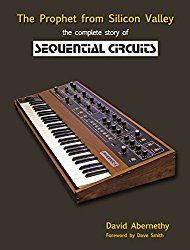
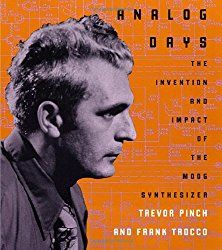
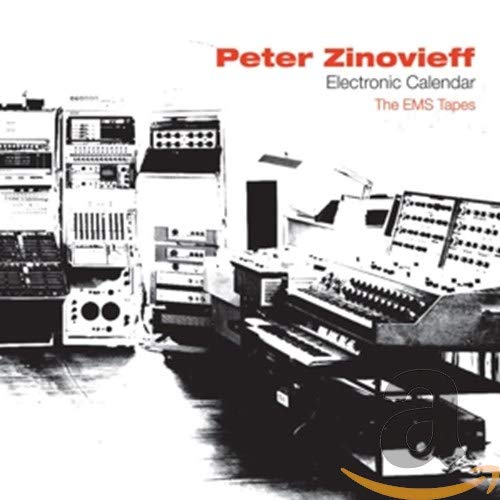
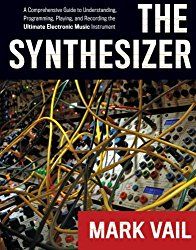
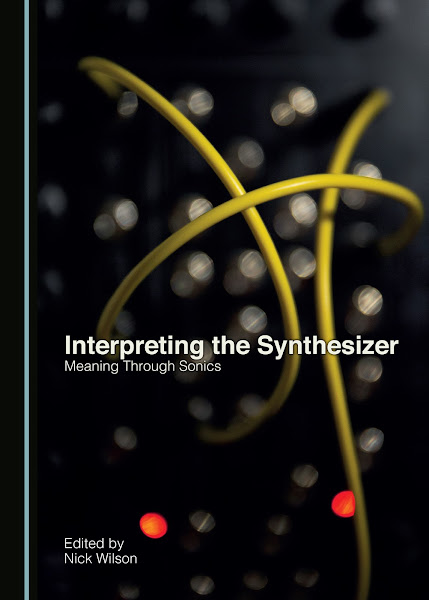
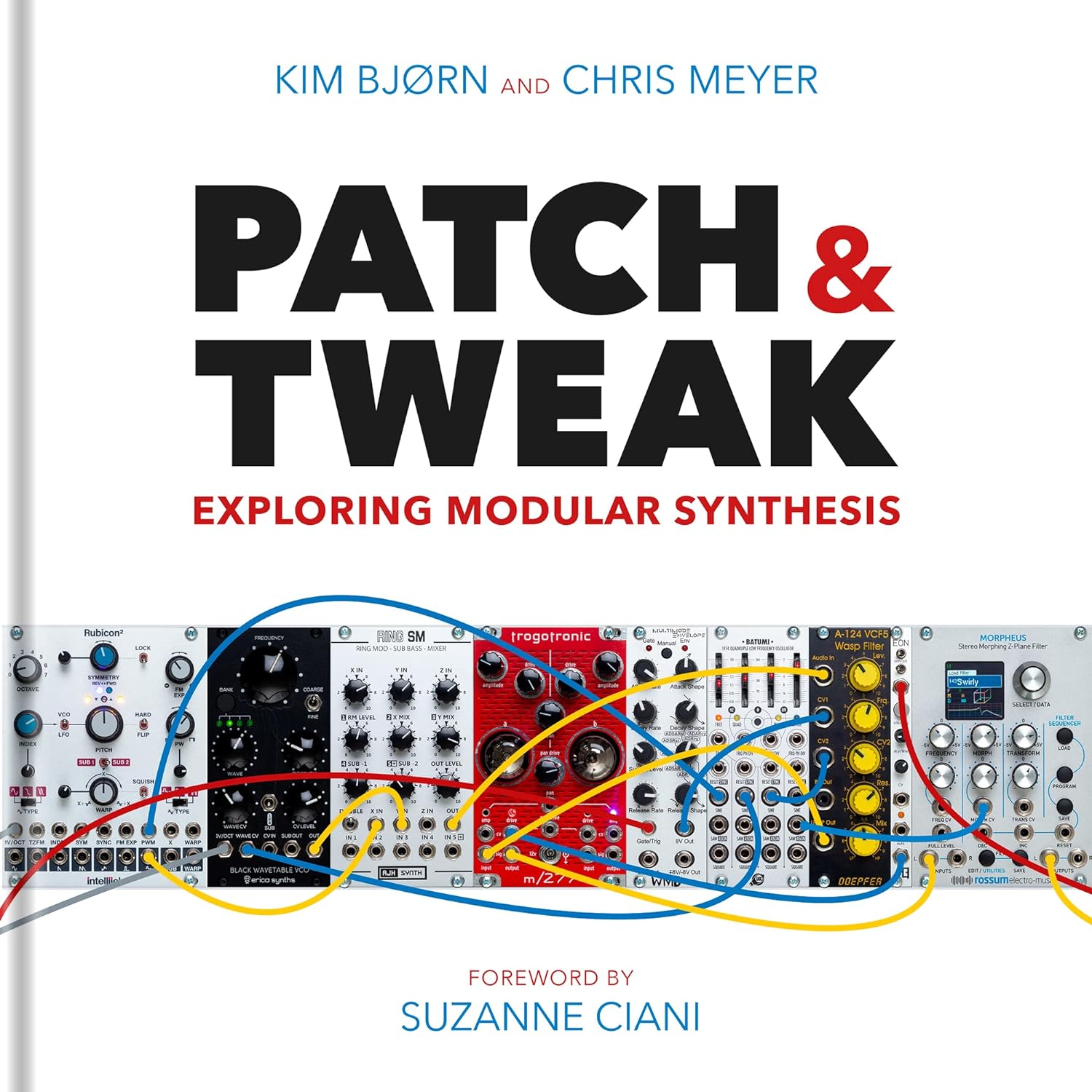
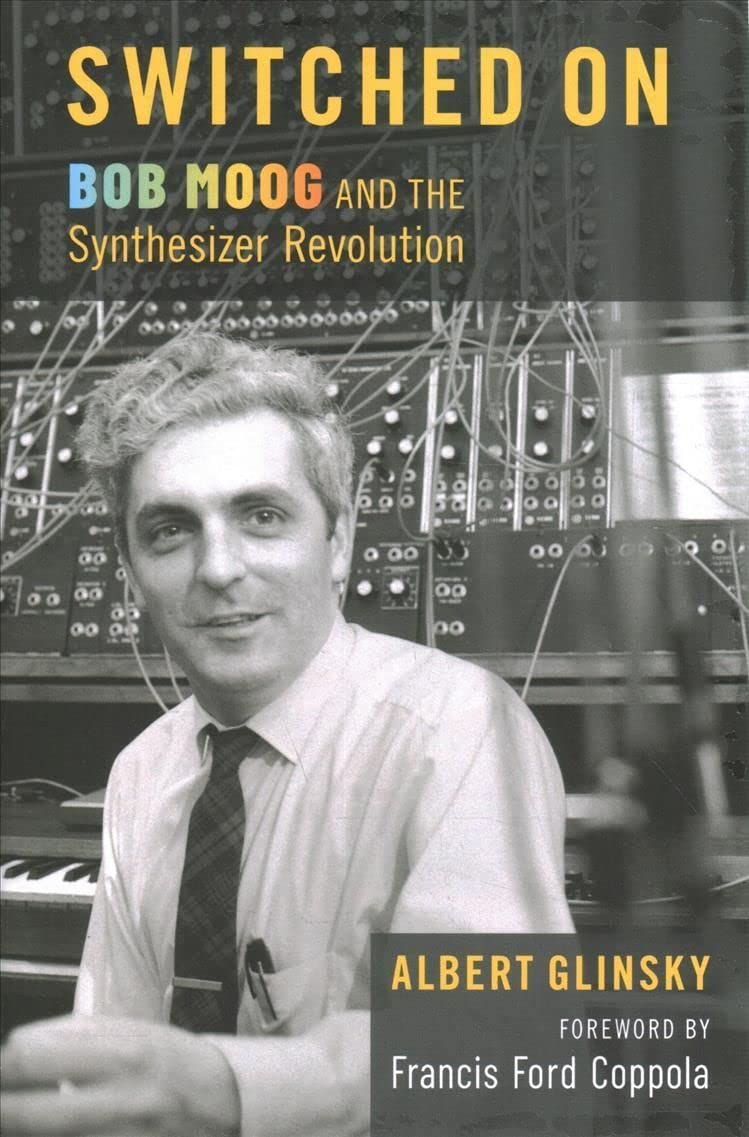
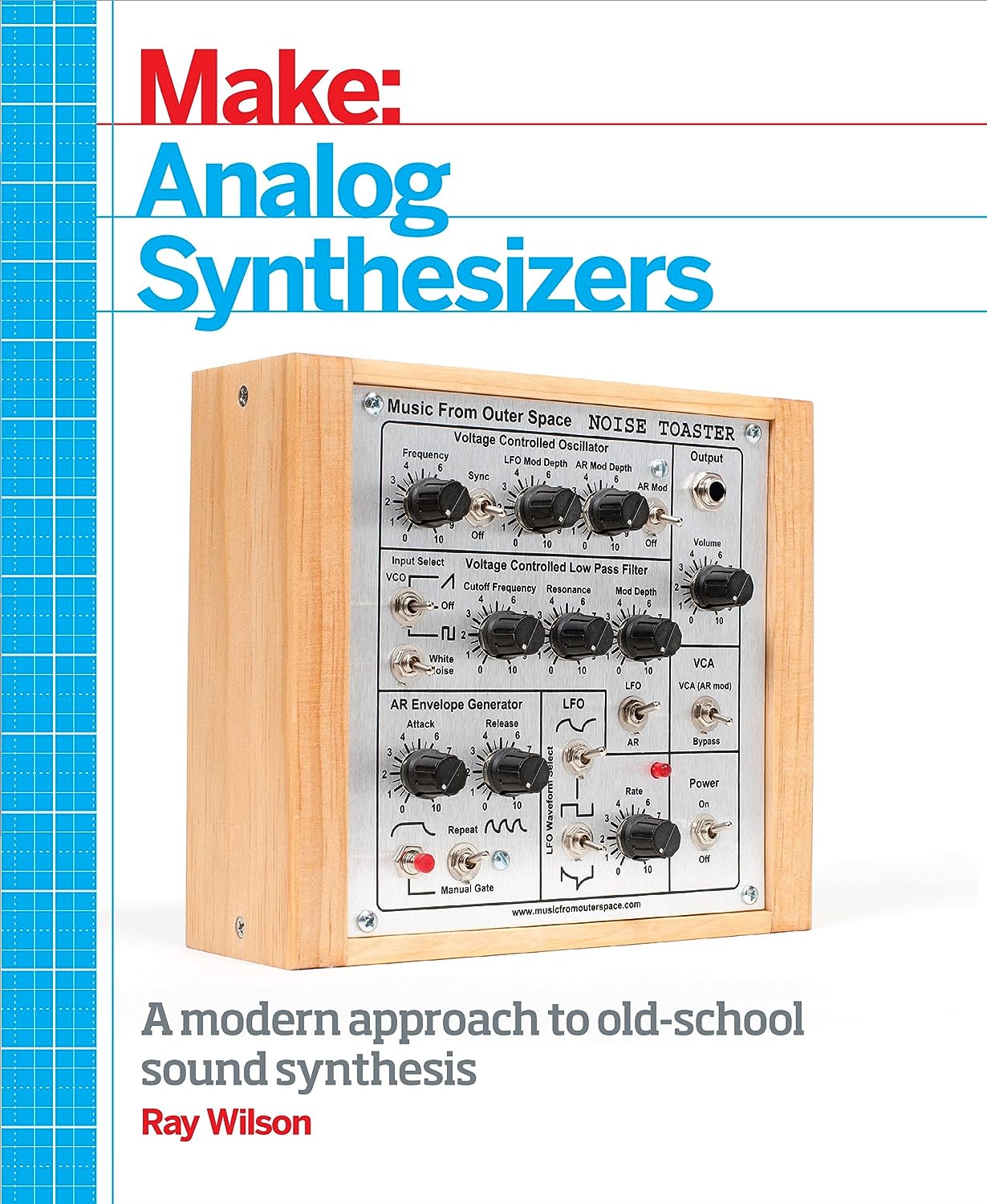
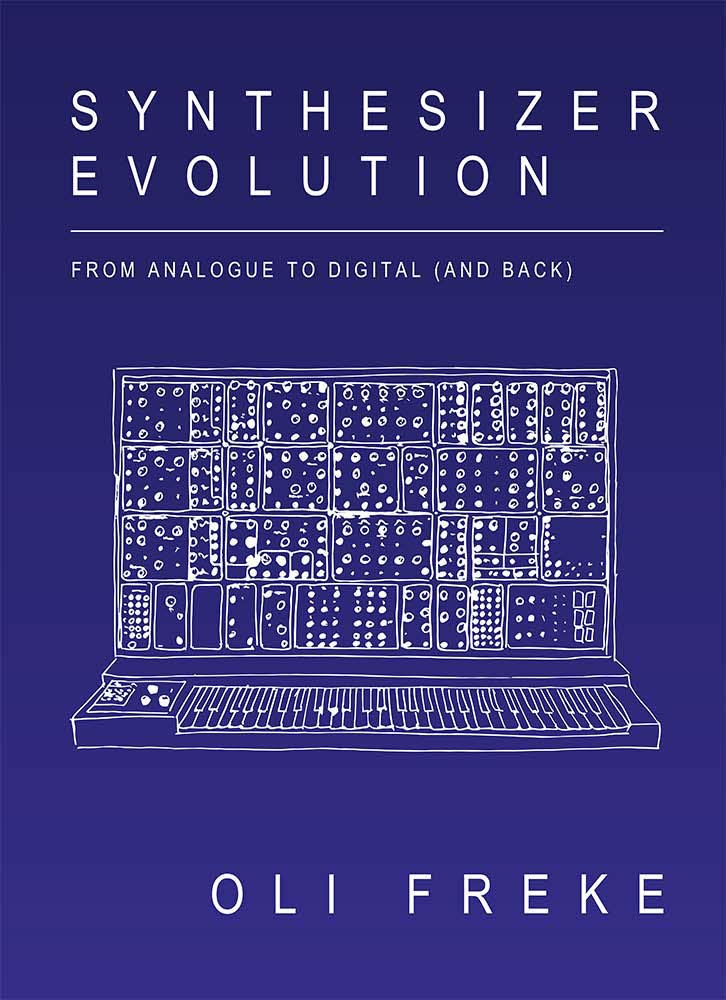
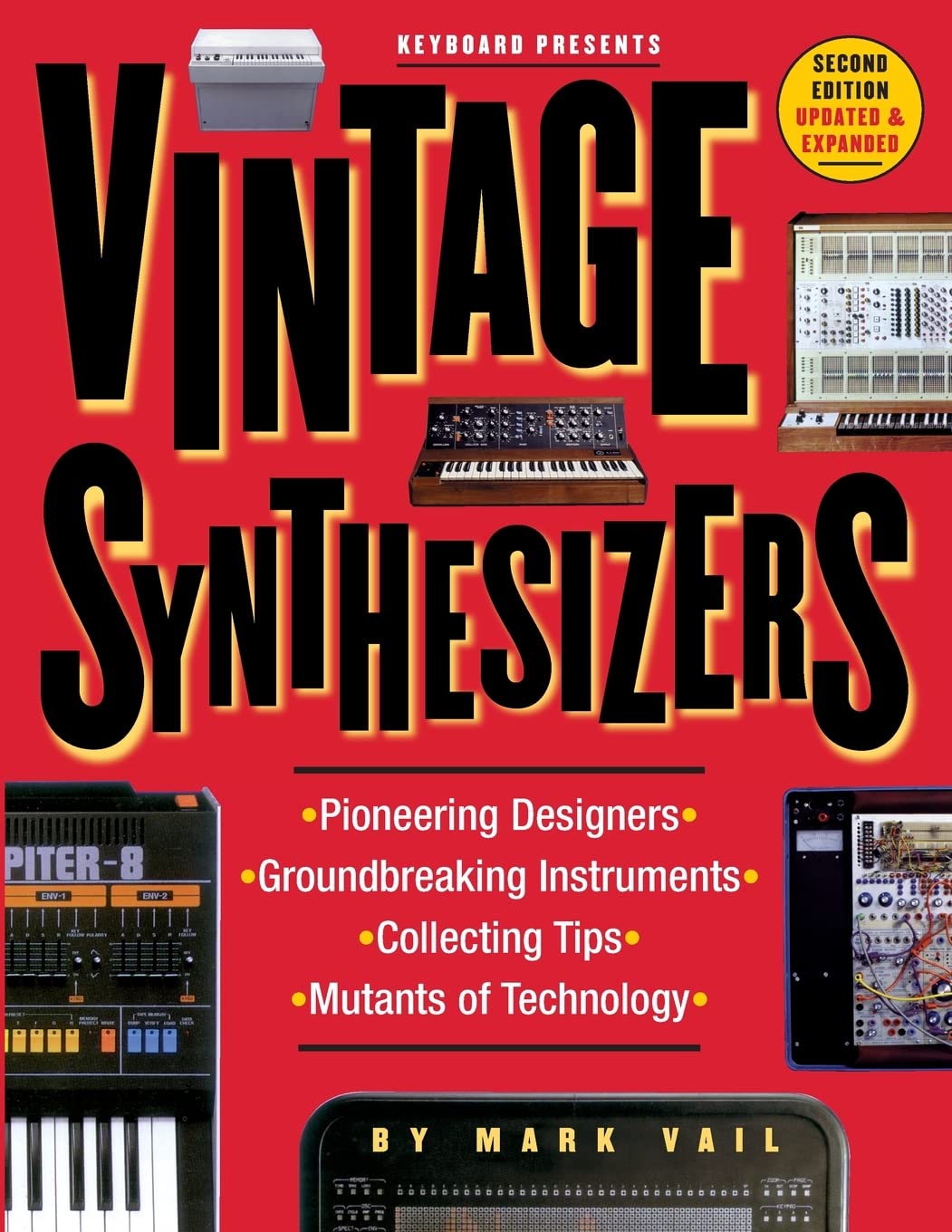
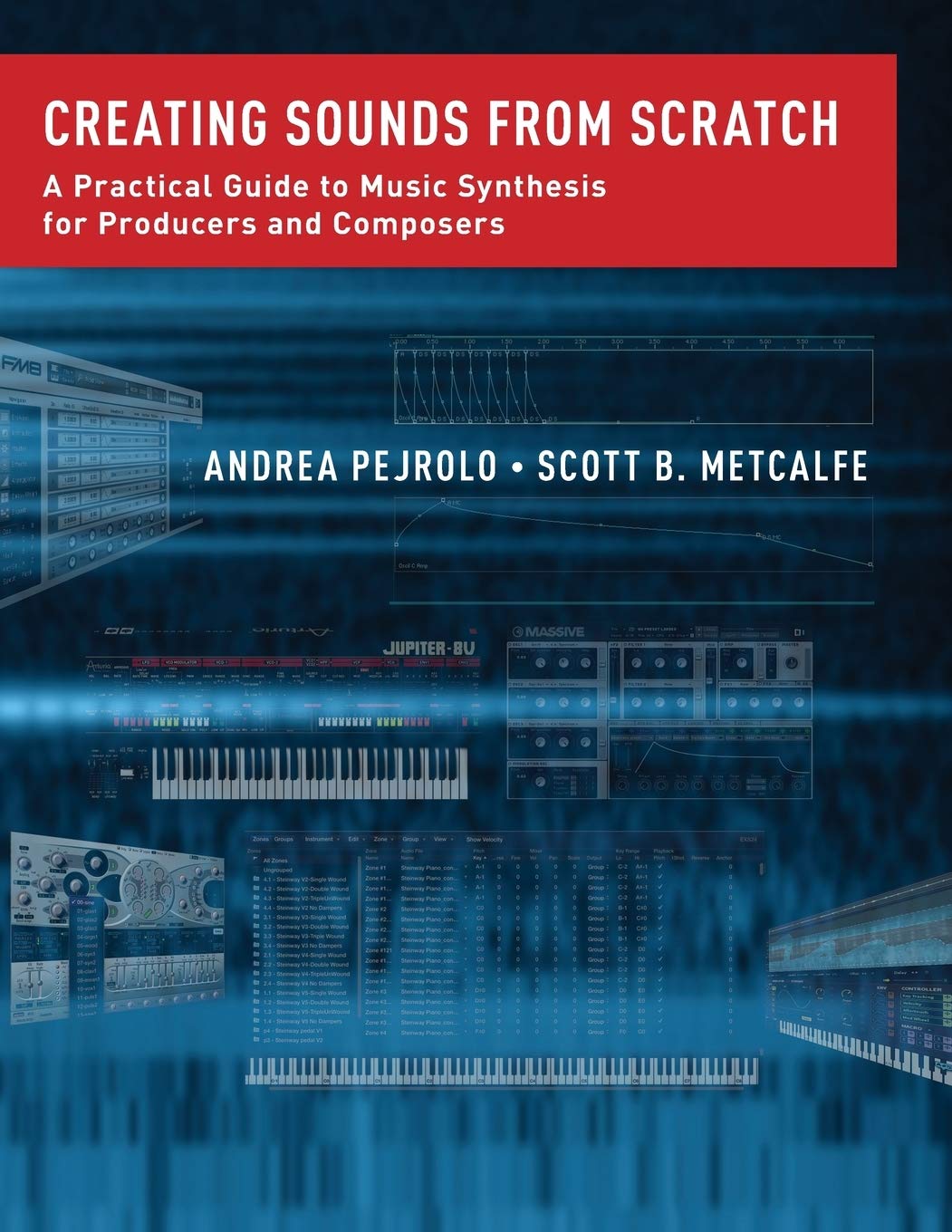
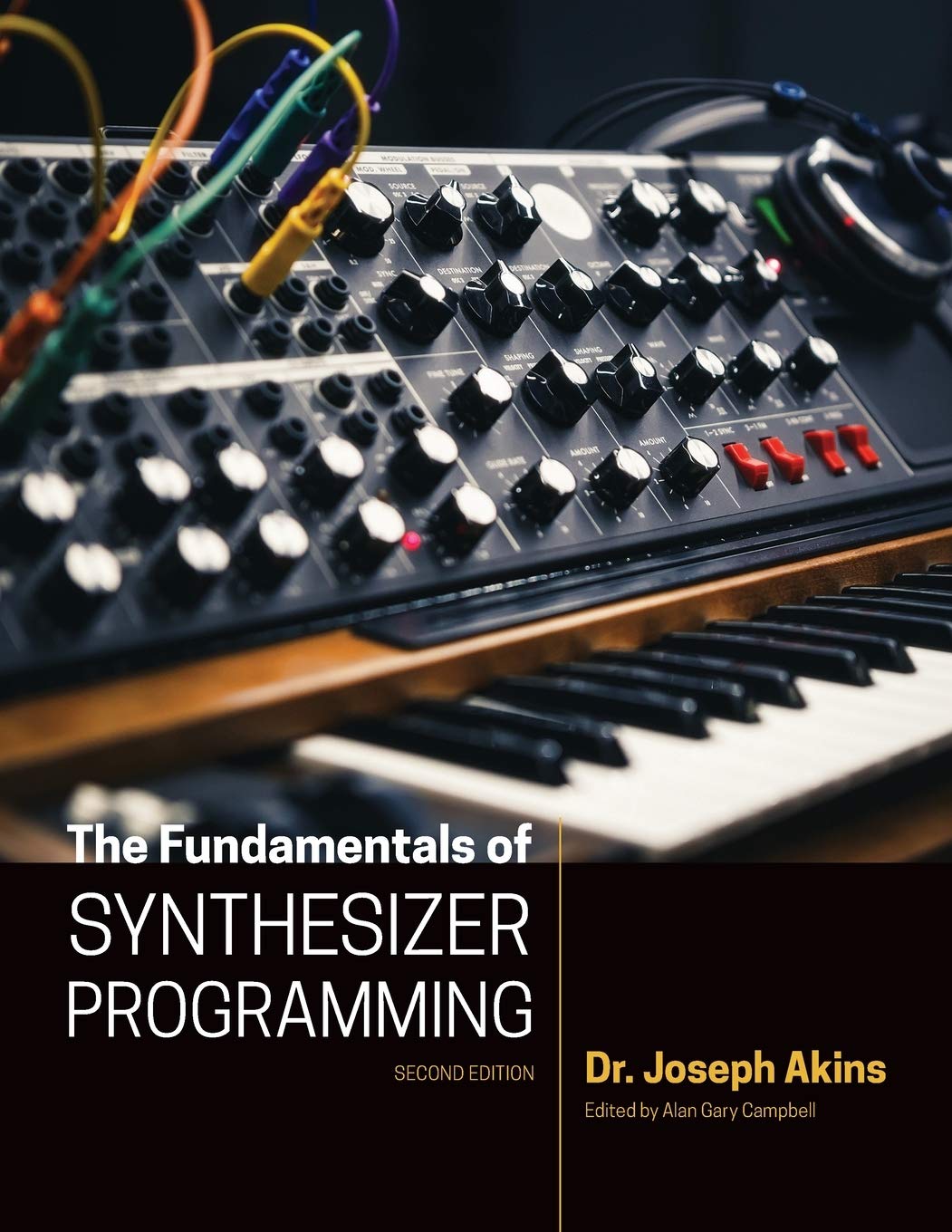

© Matrixsynth - All posts are presented here for informative, historical and educative purposes as applicable within fair use.
MATRIXSYNTH is supported by affiliate links that use cookies to track clickthroughs and sales. See the privacy policy for details.
MATRIXSYNTH - EVERYTHING SYNTH













© Matrixsynth - All posts are presented here for informative, historical and educative purposes as applicable within fair use.
MATRIXSYNTH is supported by affiliate links that use cookies to track clickthroughs and sales. See the privacy policy for details.
MATRIXSYNTH - EVERYTHING SYNTH















